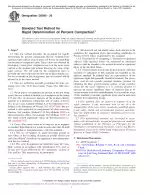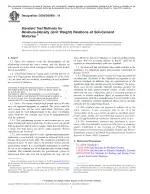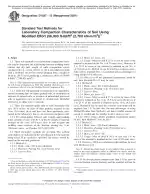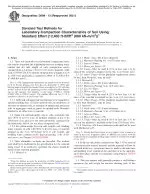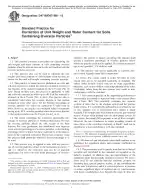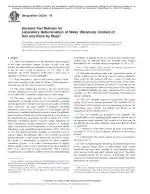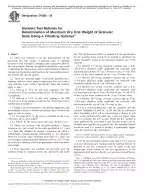ASTM D5080-20 PDF Download
Standard ENStandard Test Method for Rapid Determination of Percent Compaction
Also Known As:
ASTM D5080-20 is a standard test method that describes a procedure for rapidly determining the percent compaction and variation from optimum water content of an in-place soil. The purpose of this test method is to evaluate the percent compaction of soils used in construction without knowing the field water content at the time of the test. The test results are usually determined within 1 to 2 hours from the start of the test.
This standard test method is based on the assumption that a three-point compaction curve is a parabola at the section of the curve close to optimum water content. By developing a three-point compaction curve at the same water content as the in-place soil, the percent compaction and variation from optimum water content can be obtained. The values obtained using this rapid method will be the same as the percent compaction calculated using dry density values.
The test results obtained from this method can be used to determine if the compacted material meets density and water content control values specified as a percentage of a standard maximum density and optimum water content. The advantage of this test method is that the maximum density value can be obtained on the same soil excavated during the in-place density test.
It is important to note that the quality of the results produced by this test method depends on the competence of the personnel performing it and the suitability of the equipment and facilities used. Compliance with ASTM Practice D3740 is recommended to ensure reliable testing.
| Descriptors | density, weight,Soils,Density and Relative Density,MassCOMMA Volume and Weight,Moisture Content,Soil Compaction |
| ICS Codes | 93.020 - Earthworks. Excavations. Foundation construction. Underground works |
| Language(s) | English |
| File Size | 276.5 KB |

